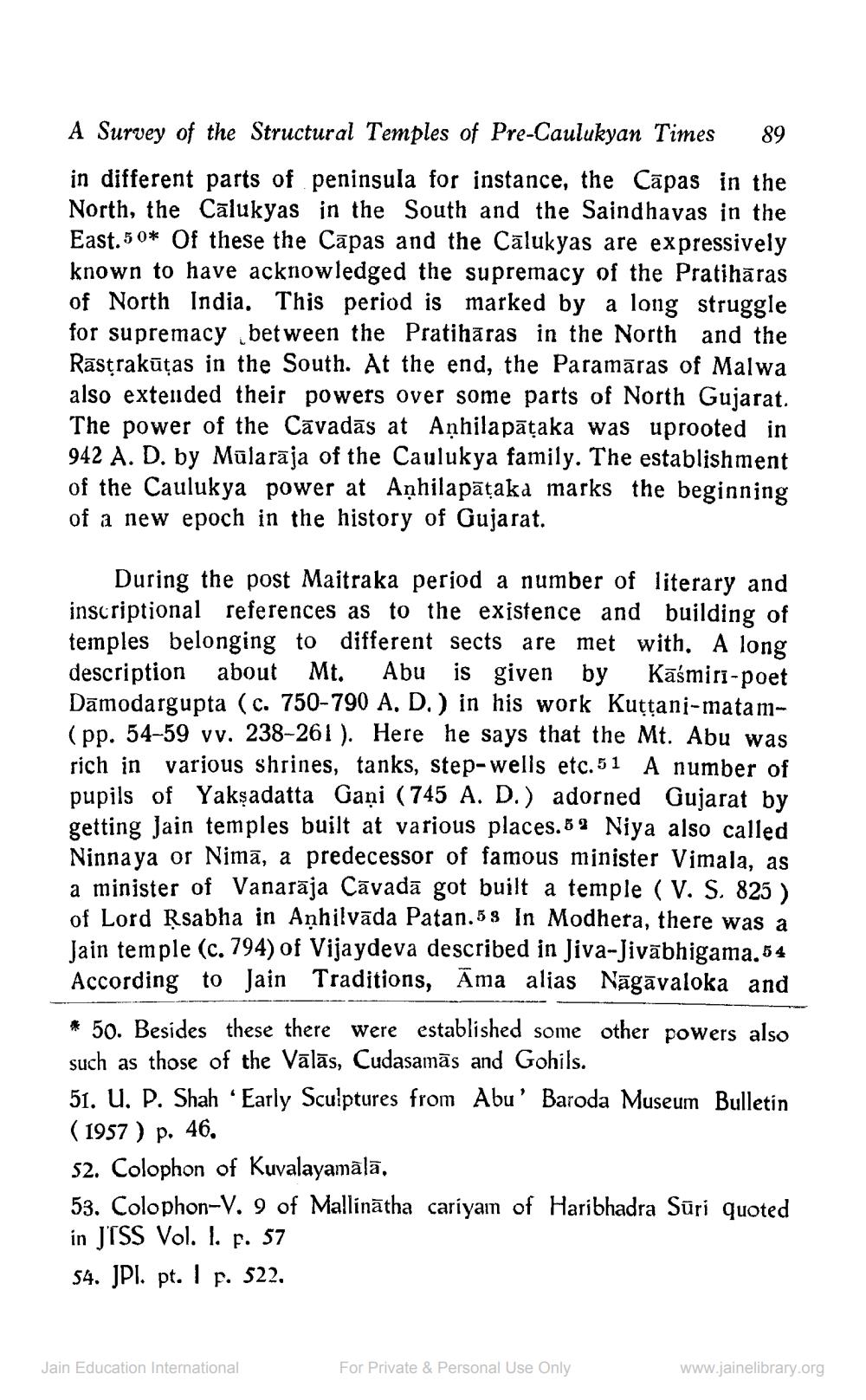________________
A Survey of the Structural Temples of Pre-Caulukyan Times 89
in different parts of peninsula for instance, the Capas in the North, the Calukyas in the South and the Saindhavas in the East. 50* Of these the Capas and the Calukyas are expressively known to have acknowledged the supremacy of the Pratihāras of North India. This period is marked by a long struggle for supremacy between the Pratihāras in the North and the Rasṭrakūtas in the South. At the end, the Paramāras of Malwa also extended their powers over some parts of North Gujarat. The power of the Cavadas at Aṇhilapāṭaka was uprooted in 942 A. D. by Mularaja of the Caulukya family. The establishment of the Caulukya power at Aṇhilapāṭaka marks the beginning of a new epoch in the history of Gujarat.
During the post Maitraka period a number of literary and inscriptional references as to the existence and building of temples belonging to different sects are met with. A long description about Mt. Abu is given by Kaśmini-poet Damodargupta (c. 750-790 A. D.) in his work Kuttani-matam(pp. 54-59 vv. 238-261). Here he says that the Mt. Abu was rich in various shrines, tanks, step-wells etc.51 A number of pupils of Yakṣadatta Gaņi (745 A. D.) adorned Gujarat by getting Jain temples built at various places.52 Niya also called Ninnaya or Nima, a predecessor of famous minister Vimala, as a minister of Vanarāja Cavada got built a temple (V. S. 825) of Lord Rsabha in Anhilvada Patan.5s In Modhera, there was a Jain temple (c. 794) of Vijaydeva described in Jiva-Jivābhigama.54 According to Jain Traditions, Āma alias Nāgāvaloka and
* 50. Besides these there were established some other powers also such as those of the Valas, Cudasamas and Gohils.
51. U. P. Shah ‘Early Sculptures from Abu' Baroda Museum Bulletin (1957) p. 46.
52. Colophon of Kuvalayamālā,
53. Colophon-V. 9 of Mallinatha cariyam of Haribhadra Sūri quoted in JTSS Vol. I. p. 57
54. JPI. pt. 1 F. 522.
Jain Education International
For Private & Personal Use Only
www.jainelibrary.org




